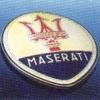Hello everyone.
In a previous thread dedicated to a Ligier-Alfa mule, the question was posed of a 4 cyl slant Turbo alla BMW that Ferrari built in 1984.
A week ago I've made the same question at the gpx.it forum. Particularly, of the engine's origins, and of whether its failure had any role in prompting Forghieri to quit the Reparto Corse.
Gpx.it is an italian forum dedicated to motorsport history, and more importantly, an (alleged, given he never revealed his name) ex-Ferrari designer from 78 to 89 regularly posts there. His nickname is 'Powerslide', and unfortunately he did not give much detail, besides stating that for what he could recall, that engine was never much more than a mock-up, and that obviously work on it stopped after Forghieri's resignation.
Now the question is that British authors like Alan Henry and Pritchard basically correlated the failure of that Turbo engine with Forghieri's resignation. At the same time, in his biography Forghieri does not make any reference to that engine (understandably, if it proved to be a major failure). Moreover, in the recent biography of Enzo Ferrari written by Luca Dal Monte there's no mention to this episode either.
My own conclusion is that the British journalists exaggerated the importance of the engine in Ferrari's development programme (Postlethwaite used to say that it was usual for Ferrari engineers to try lots of solutions). Yet, it definitely played a role in further politically isolating Forghieri (as Henri Greuter asserted in the Ligier-Alfa thread).
It is telling of how opaque for outsiders were Ferrari's internal politics that neither Henry nor Pritchard make any allusions to Forghieri's rift with Piccinini and other members of the Reparto Corse (who, though?) - which Forghieri himself admitted inhis biography. Or maybe Henry and Pritchard simply preferred to remain silent as many of those individuals were still active...
In any case, once we delve into matters of detail, Forghieri has always been tight lipped about who was with him or against him, and there's little testimonies available from other key engineers of the time. So we'll probably never know the whole truth.
My hope is that some of the forum's members could perhaps add a bit more info on the engine's history, and its role in prompting Forghieri's resignation.
Below is the thread on the topic I created at gpx.it, complete with pics of the 4cyl Turbo (which can be found at http://www.gurneyfla...ariengines.html), and excerpts in english from Henry's and Pritchard's books on the whole issue.
http://www.gpx.it/fo....php?f=2&t=5837
P.S.1
And for those that can read Italian, Carlo Marinconvich's 1980s articles for La Reppublica give a good idea of the turbulent politics involving Ferrari at the time, and of course, of how Italian journalists further contributed to worsen them:
http://ricerca.repub...-colpevole.html
P.S.2
Does anyone know if Bamsey's book '1000 BHP Grand Prix Cars' contain any information on the engine?
By the way, I'm undecided on buying it as apparently it is very, very heavy on technical detail, and my experience with the last book of that kind I've read (namely Paul Frère's bible on the 911) was dismal.
At the same time, Henry's books on the Turbo cars seem to be a bit light on detail compared to Bamsey's, so I would like to ask if '1000BHP' is readable for someone only familiar with basic engineering and mechanical concepts. Or is it for uber-techies only?
Mind you, I've no problems reading and understanding works by Doug Nye per instance - I'm only afraid of splashing quite some euros on something that reads like a auto manual (with all due respect to Frère).
Edited by guiporsche, 13 January 2017 - 17:35.
















